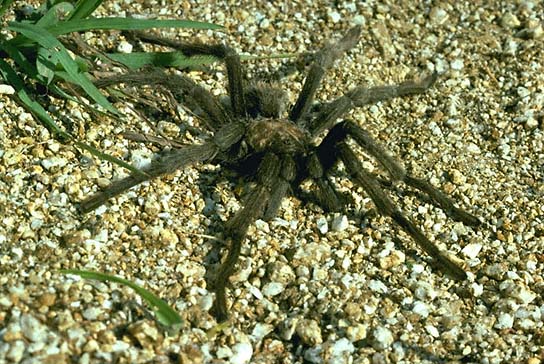|
|
|

Tarantula
(Aphonopelma eutylenum)
Description: The Tarantula is a member of the family Theraphosidae. Tarantulas are large, hairy spiders, 1 3/8" (33 mm) or more long, with a legspan up to 5 7/8" (150 mm). Although some South American species have deadly venom, the bite of North American tarantulas is not any more dangerous to people than a wasp or bee sting. These spiders have 8 closely grouped eyes; the large middle pair are circular with 3 eyes on each side. Each leg has 2 claws at the tip and a tuft of hair underneath. There are microscopic bristles on the abdomen, which break off easily and can irritate the skin of small mice and other prey. Males have longer legs and are more active than females. Males are short-lived and do not molt after they mature at a few years of age; females continue to molt and may live 20-35 years in captivity. Nocturnal, tarantulas hide in dark cavities or burrows during the day, emerging to hunt by touch in darkness. Most line the top of the burrow with silk, but do not spin webs to catch prey. They were formerly called banana spiders, because tropical species arrived in cargoes of fruit. About 30 species are found in the southern United States.Caution: Gives painful bite; not toxic to humans; not aggressive.
Habitat: Dry grasslands, scrub.
Season: Year-round; most active spring–early summer.